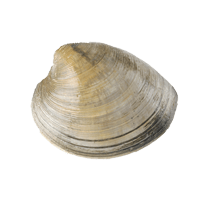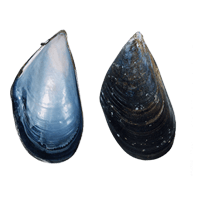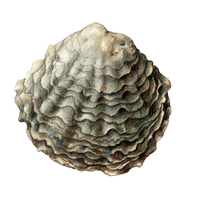Shrimp nutrition: calories, carbs, GI, protein, fiber, fats
Crustaceans, shrimp, mixed species, cooked, moist heat (may have been previously frozen)
*all the values are displayed for the amount of 100 grams
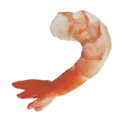
What Do 120 Calories or 100 Grams of Shrimps Look Like?
The picture below represents what 120 calories or 100 grams of shrimp look like, giving a visual reference for their weight and energy content. About 7 medium shrimp make up 100 grams. A typical serving size is 3 oz (85 g), which provides 102 calories.
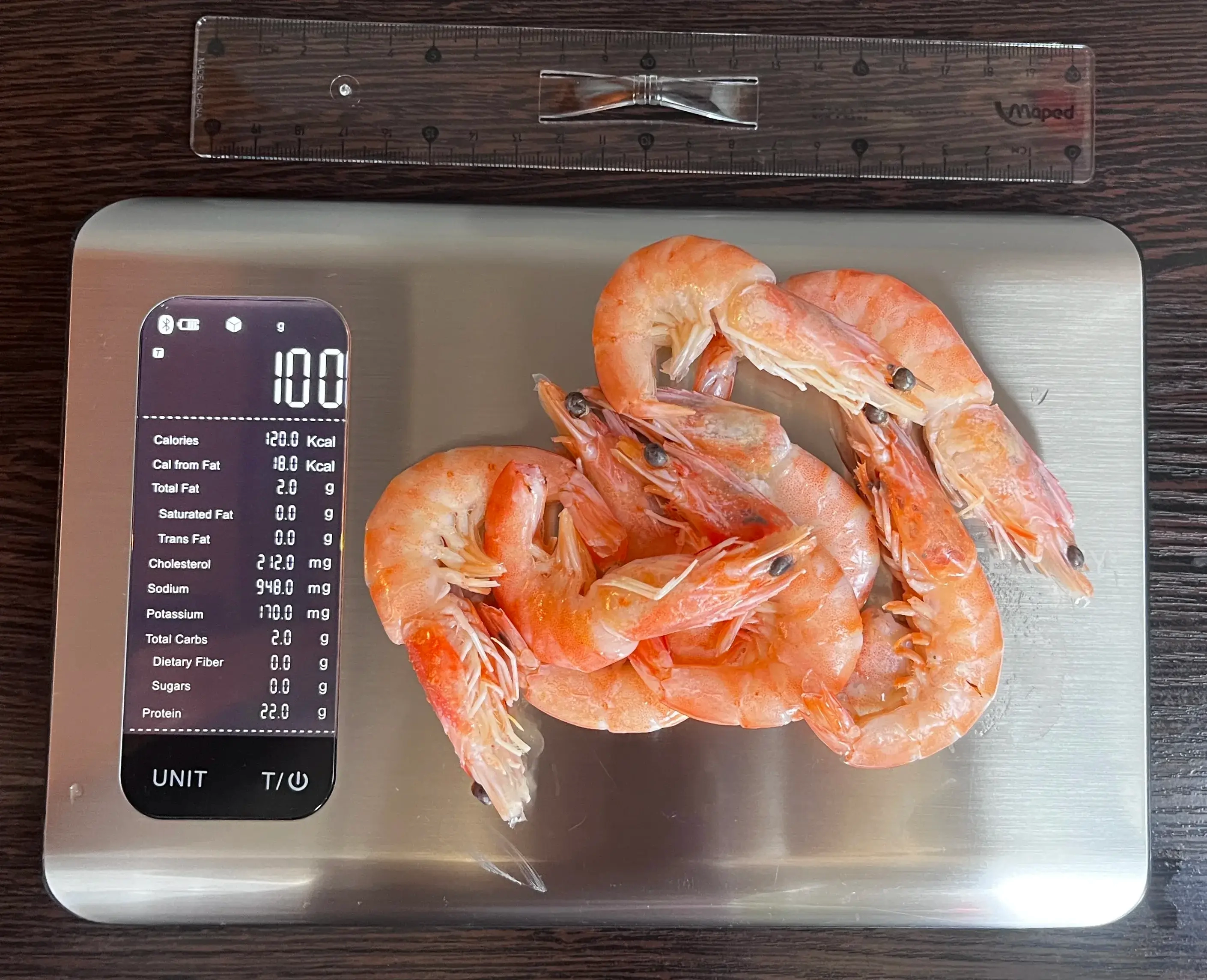
Top nutrition facts for Shrimp

| Calories ⓘ Calories for selected serving | 119 kcal |
| Glycemic index ⓘ Gi values are taken from various scientific sources. GI values less than 55 are considered as low. Values above 70 are considered as high. | 50 (low) |
| Glycemic load | 1 (low) |
| Net Carbs ⓘ Net Carbs = Total Carbohydrates – Fiber – Sugar Alcohols | 2 grams |
| Default serving size ⓘ Serving sizes are mostly taken from FDA's Reference Amounts Customarily Consumed (RACCs) | 3 oz (85 grams) |
| Acidity (Based on PRAL) ⓘ PRAL (Potential renal acid load) is calculated using a formula. On the PRAL scale the higher the positive value, the more is the acidifying effect on the body. The lower the negative value, the higher the alkalinity of the food. 0 is neutral. | 16.8 (acidic) |
| Oxalates ⓘ https://www.hsph.harvard.edu/nutrition-questionnaire-service-center/nutrient-tables-download-page/ | 0 mg |
Cholesterol ⓘHigher in Cholesterol content than 94% of foods
Sodium ⓘHigher in Sodium content than 94% of foods
Phosphorus ⓘHigher in Phosphorus content than 84% of foods
Protein ⓘHigher in Protein content than 83% of foods
Selenium ⓘHigher in Selenium content than 78% of foods
Shrimp calories (kcal)
| Calories for different serving sizes of shrimp | Calories | Weight |
|---|---|---|
| Calories in 100 grams | 119 | |
| Calories in 4 large | 26 | 22 g |
| Calories in 3 oz | 101 | 85 g |
| Calories for different varieties of shrimp | Calories | Weight |
|---|---|---|
| Crustaceans, shrimp, mixed species, cooked, moist heat (may have been previously frozen) (this food) | 119 | 100 g |
| Cucumber, peeled, raw | 12 | 100 g |
| Crustaceans, shrimp, mixed species, raw (may have been previously frozen) | 71 | 100 g |
| Crustaceans, shrimp, raw (not previously frozen) | 85 | 100 g |
| Shrimp | 99 | 100 g |
| Crustaceans, shrimp, mixed species, canned | 100 | 100 g |
| Crustaceans, shrimp, mixed species, imitation, made from surimi | 101 | 100 g |
| Crustaceans, spiny lobster, mixed species, raw | 112 | 100 g |
| Crustaceans, spiny lobster, mixed species, cooked, moist heat | 143 | 100 g |
| Crustaceans, shrimp, mixed species, cooked, breaded and fried | 242 | 100 g |
Shrimp Glycemic index (GI)
Gi values are taken from various scientific sources. GI values less than 55 are considered as low. Values above 70 are considered as high.
Shrimp Glycemic load (GL)
Mineral coverage chart
Mineral chart - relative view
Vitamin coverage chart
Vitamin A:
270µg of 900µg
30%
Vitamin E:
6.6mg of 15mg
44%
Vitamin D:
0.3µg of 20µg
1.5%
Vitamin C:
0mg of 90mg
0%
Vitamin B1:
0.1mg of 1mg
8%
Vitamin B2:
0.07mg of 1mg
5.5%
Vitamin B3:
8mg of 16mg
50%
Vitamin B5:
1.6mg of 5mg
31%
Vitamin B6:
0.73mg of 1mg
56%
Folate:
72µg of 400µg
18%
Vitamin B12:
5µg of 2µg
208%
Vitamin K:
1.2µg of 120µg
1%
Vitamin chart - relative view
Macronutrients chart
Protein:
Daily Value: 46%
22.8 g of 50 g
22.8 g (46% of DV )
Fats:
Daily Value: 3%
1.7 g of 65 g
1.7 g (3% of DV )
Carbs:
Daily Value: 1%
1.5 g of 300 g
1.5 g (1% of DV )
Water:
Daily Value: 4%
71.6 g of 2,000 g
71.6 g (4% of DV )
Other:
2.4 g
2.4 g
Protein quality breakdown
Tryptophan:
780mg of 280mg
279%
Threonine:
2712mg of 1,050mg
258%
Isoleucine:
3150mg of 1,400mg
225%
Leucine:
5850mg of 2,730mg
214%
Lysine:
6516mg of 2,100mg
310%
Methionine:
1995mg of 1,050mg
190%
Phenylalanine:
2976mg of 1,750mg
170%
Valine:
3201mg of 1,820mg
176%
Histidine:
1503mg of 700mg
215%
Fat type information
Saturated fat:
0.52 g
Monounsaturated fat:
0.36 g
Polyunsaturated fat:
0.59 g
All nutrients for Shrimp per 100g
| Nutrient | Value | DV% | In TOP % of foods | Comparison |
| Vitamin A | 90µg | 10% | 29% | |
| Calories | 119kcal | 6% | 68% |
2.5 times more than Orange
|
| Protein | 23g | 54% | 17% |
8.1 times more than Broccoli
|
| Fats | 1.7g | 3% | 69% |
19.6 times less than Cheese
|
| Vitamin C | 0mg | 0% | 100% |
N/A
|
| Net carbs | 1.5g | N/A | 67% |
35.6 times less than Chocolate
|
| Carbs | 1.5g | 1% | 69% |
18.5 times less than Rice
|
| Cholesterol | 211mg | 70% | 6% |
1.8 times less than Egg
|
| Vitamin D | 0.1µg | 1% | 60% |
22 times less than Egg
|
| Magnesium | 37mg | 9% | 27% |
3.8 times less than Almonds
|
| Calcium | 91mg | 9% | 24% |
1.4 times less than Milk
|
| Potassium | 170mg | 5% | 66% |
1.2 times more than Cucumber
|
| Iron | 0.32mg | 4% | 83% |
8.1 times less than Beef broiled
|
| Sugar | 0g | N/A | 100% |
N/A
|
| Fiber | 0g | 0% | 100% |
N/A
|
| Copper | 0.26mg | 29% | 27% |
1.8 times more than Shiitake
|
| Zinc | 1.6mg | 15% | 44% |
3.9 times less than Beef broiled
|
| Starch | 0g | 0% | 100% |
N/A
|
| Phosphorus | 306mg | 44% | 16% |
1.7 times more than Chicken meat
|
| Sodium | 947mg | 41% | 6% |
1.9 times more than White bread
|
| Vitamin E | 2.2mg | 15% | 40% |
1.5 times more than Kiwi
|
| Manganese | 0.05mg | 2% | 67% | |
| Selenium | 50µg | 90% | 22% | |
| Vitamin B1 | 0.03mg | 3% | 81% |
8.3 times less than Pea raw
|
| Vitamin B2 | 0.02mg | 2% | 89% |
5.4 times less than Avocado
|
| Vitamin B3 | 2.7mg | 17% | 53% |
3.6 times less than Turkey meat
|
| Vitamin B5 | 0.52mg | 10% | 57% |
2.2 times less than Sunflower seeds
|
| Vitamin B6 | 0.24mg | 19% | 45% |
2 times more than Oats
|
| Vitamin B12 | 1.7µg | 69% | 34% |
2.4 times more than Pork
|
| Vitamin K | 0.4µg | 0% | 82% |
254 times less than Broccoli
|
| Trans fat | 0.04g | N/A | 68% |
425.4 times less than Margarine
|
| Folate | 24µg | 6% | 45% |
2.5 times less than Brussels sprouts
|
| Choline | 135mg | 25% | 47% | |
| Saturated fat | 0.52g | 3% | 69% |
11.3 times less than Beef broiled
|
| Monounsaturated fat | 0.36g | N/A | 74% |
27.1 times less than Avocado
|
| Polyunsaturated fat | 0.59g | N/A | 58% |
80 times less than Walnut
|
| Tryptophan | 0.26mg | 0% | 55% |
1.2 times less than Chicken meat
|
| Threonine | 0.9mg | 0% | 60% |
1.3 times more than Beef broiled
|
| Isoleucine | 1.1mg | 0% | 57% |
1.1 times more than Salmon raw
|
| Leucine | 2mg | 0% | 55% |
1.2 times less than Tuna Bluefin
|
| Lysine | 2.2mg | 0% | 53% |
4.8 times more than Tofu
|
| Methionine | 0.67mg | 0% | 53% |
6.9 times more than Quinoa
|
| Phenylalanine | 0.99mg | 0% | 55% |
1.5 times more than Egg
|
| Valine | 1.1mg | 0% | 60% |
1.9 times less than Soybean raw
|
| Histidine | 0.5mg | 0% | 68% |
1.5 times less than Turkey meat
|
| Fructose | 0g | 0% | 100% |
N/A
|
| Caffeine | 0mg | 0% | 100% | |
| Omega-3 - EPA | 0.14g | N/A | 34% |
5.1 times less than Salmon
|
| Omega-3 - DHA | 0.14g | N/A | 35% |
10.4 times less than Salmon
|
| Omega-3 - DPA | 0.01g | N/A | 42% |
14.2 times less than Salmon
|
| Omega-6 - Eicosadienoic acid | 0.01g | N/A | 78% |
Check out similar food or compare with current
NUTRITION FACTS LABEL
Nutrition Facts
___servings per container
Serving Size ______________
Serving Size ______________
Amount Per 100g
Calories 119
% Daily Value*
2.6%
Total Fat
1.7g
2.4%
Saturated Fat 0.52g
0
Trans Fat
0g
70%
Cholesterol 211mg
41%
Sodium 947mg
0.51%
Total Carbohydrate
1.5g
0
Dietary Fiber
0g
Total Sugars 0g
Includes ? g Added Sugars
Protein
23g
Vitamin D
4mcg
0.5%
Calcium
91mg
9.1%
Iron
0.32mg
4%
Potassium
170mg
5%
*
The % Daily Value (DV) tells you how much a nutrient in a serving of food contributes to a daily diet. 2,000 calories a day is used for general nutrition advice.
Health checks
ⓘ
Dietary cholesterol is not associated with an increased risk of coronary heart disease in healthy individuals. However, dietary cholesterol is common in foods that are high in harmful saturated fats.
Source
Low in Cholesterol
ⓘ
Trans fat consumption increases the risk of cardiovascular disease and mortality by negatively affecting blood lipid levels.
Source
No Trans Fats
ⓘ
Saturated fat intake can raise total cholesterol and LDL (low-density lipoprotein) levels, leading to an increased risk of atherosclerosis. Dietary guidelines recommend limiting saturated fats to under 10% of calories a day.
Source
Low in Saturated Fats
ⓘ
While the consumption of moderate amounts of added sugars is not detrimental to health, an excessive intake can increase the risk of obesity, and therefore, diabetes.
Source
Low in Sugars
Shrimp nutrition infographic
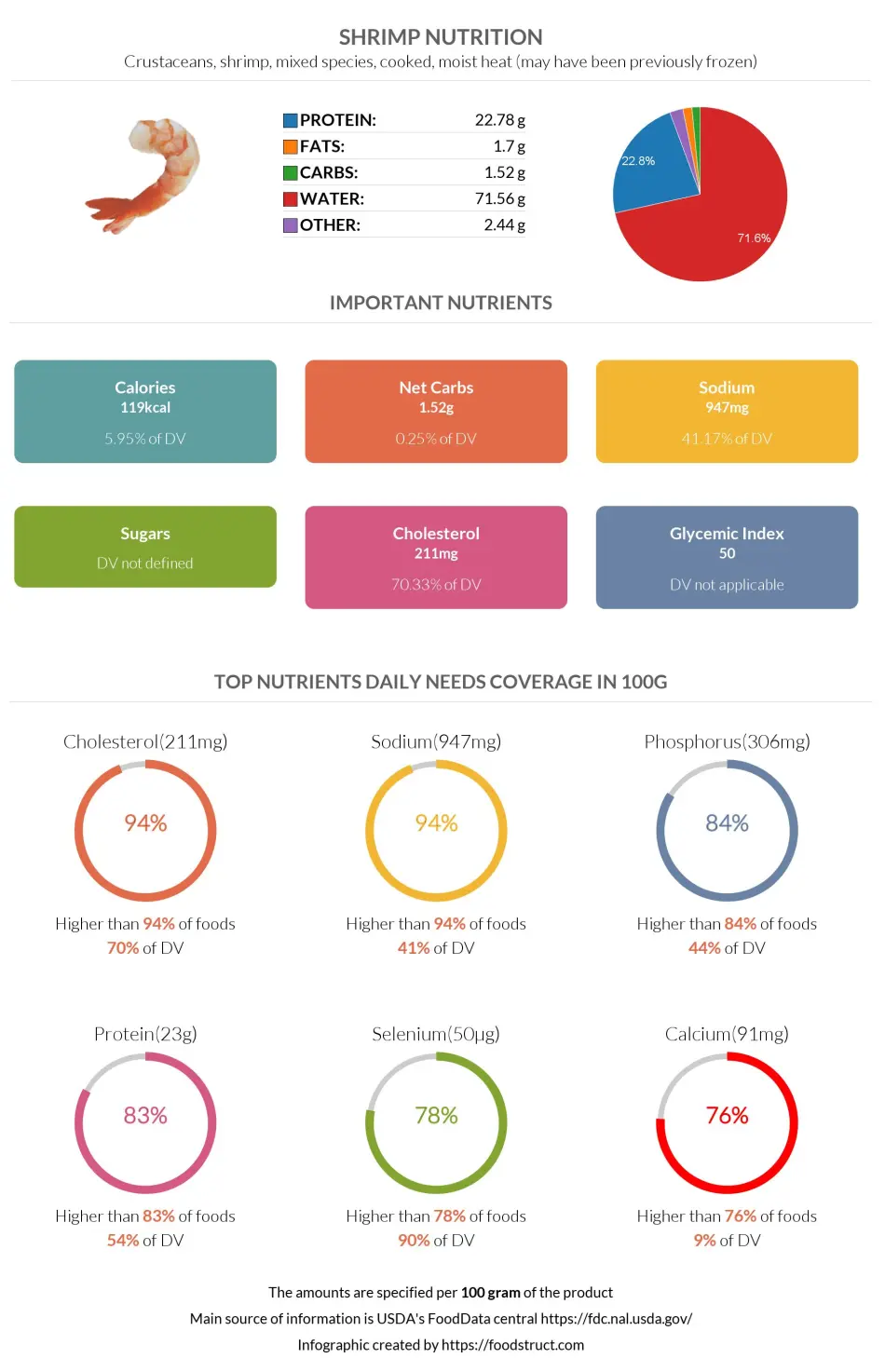
Infographic link
References
All the values for which the sources are not specified explicitly are taken from FDA’s Food Central. The exact link to the food presented on this page can be found below.
